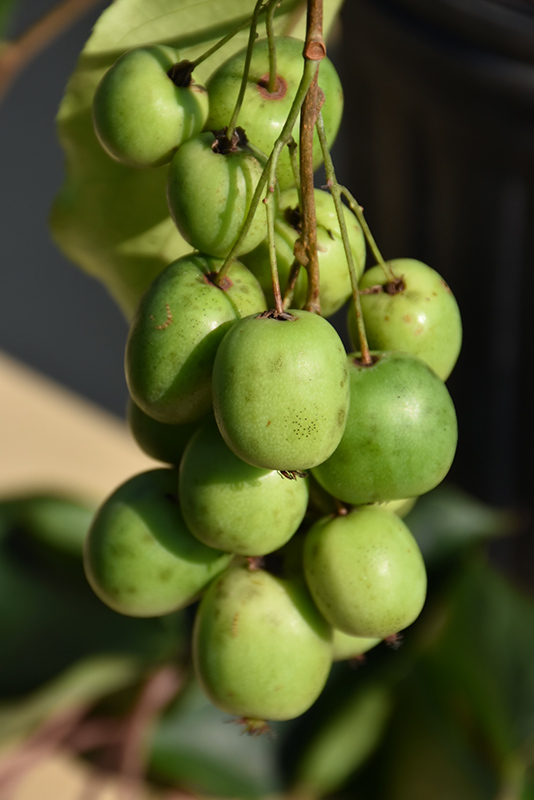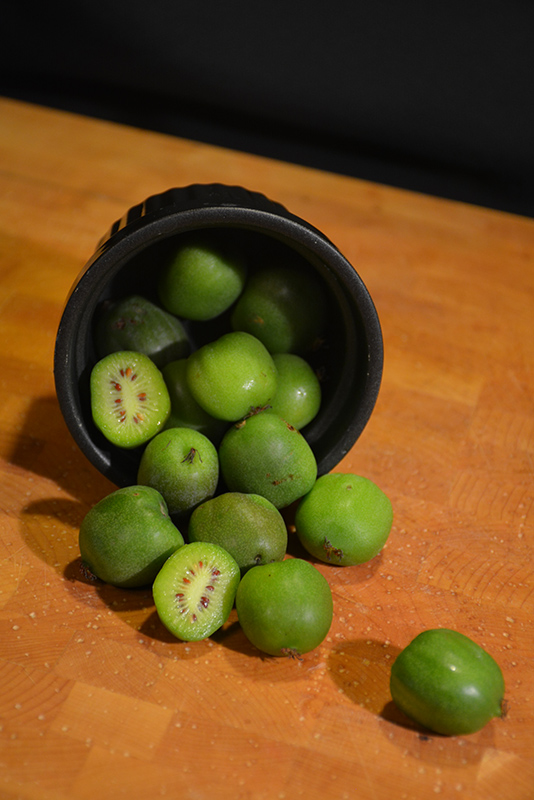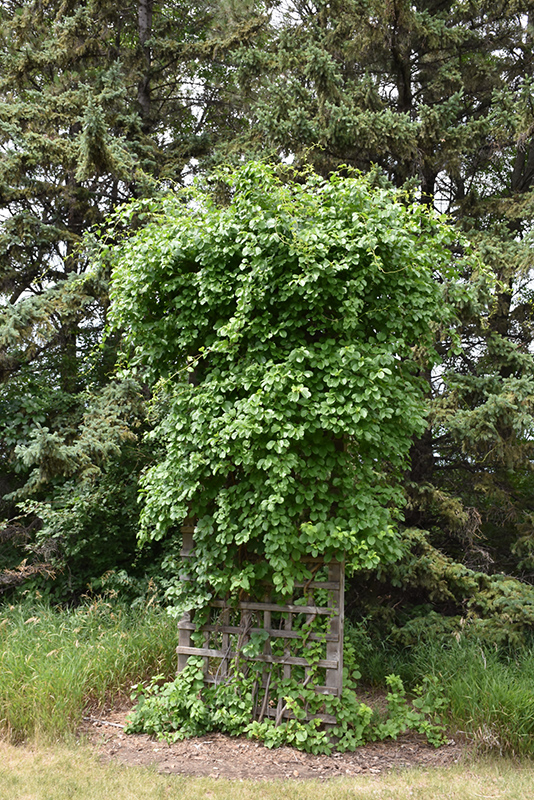Height: 40 feet Spread: 24 inches
Sunlight:
Hardiness Zone: 4 Other Names: Bower Actinidia Description: A vigorous climbing vine that produces delicious edible but small kiwi fruit on female plants; female plants require a male pollinator to set fruit; very hardy and adaptable, a great way to fool your friends with the tasty fruit Edible Qualities The Hardy Kiwi is a woody vine that is typically grown for its edible qualities, although it does have ornamental merits as well. It produces small green oval fruit which are usually ready for picking from early to mid fall. The fruits have a sweet taste. The fruit are most often used in the following ways: Features & Attributes The Hardy Kiwi features dainty fragrant white buttercup flowers with yellow anthers along the branches from mid to late spring. It has dark green deciduous foliage. The large oval leaves turn yellow in fall. It features an abundance of magnificent green berries in early fall. This is a dense multi-stemmed deciduous woody vine with a spreading, ground-hugging habit of growth. Its relatively coarse texture can be used to stand it apart from other landscape plants with finer foliage. This is a relatively low maintenance plant, and is best pruned in late winter once the threat of extreme cold has passed. It has no significant negative characteristics. Aside from its primary use as an edible, the Hardy Kiwi is sutiable for the following landscape applications; Planting & Growing The Hardy Kiwi will grow to be about 40 feet tall at maturity, with a spread of 24 inches. As a climbing vine, it should be planted next to a fence, trellis or other rigid structure where it can be trained to grow upwards on it. It grows at a fast rate, and under ideal conditions can be expected to live for approximately 15 years. This is a dioecious species, meaning that individual plants are either male or female. Only the females will produce fruit, and a male variety of the same species is required nearby as a pollinator. This woody vine can be integrated into a landscape or flower garden by creative gardeners, but is usually grown in a designated edibles garden. It does best in full sun to partial shade. It prefers to grow in average to moist conditions, and shouldn't be allowed to dry out. It is not particular as to soil type or pH. It is highly tolerant of urban pollution and will even thrive in inner city environments. This species is not originally from North America.![]()
![]()
![]()
![]()
![]()
![]()
![]()
![]()
![]()
![]()
Characteristics
Applications
Ornamental Features
This guide is an online resource representing many of the varieties that we carry over the course of the season, and is intended for informational purposes only. Inventory varies seasonally, so we cannot guarantee that every plant will be in stock at all times - please contact the store directly for current availability. It does not include our entire selection of plants, so be sure to visit our store to see varieties that may not be represented on this list.




